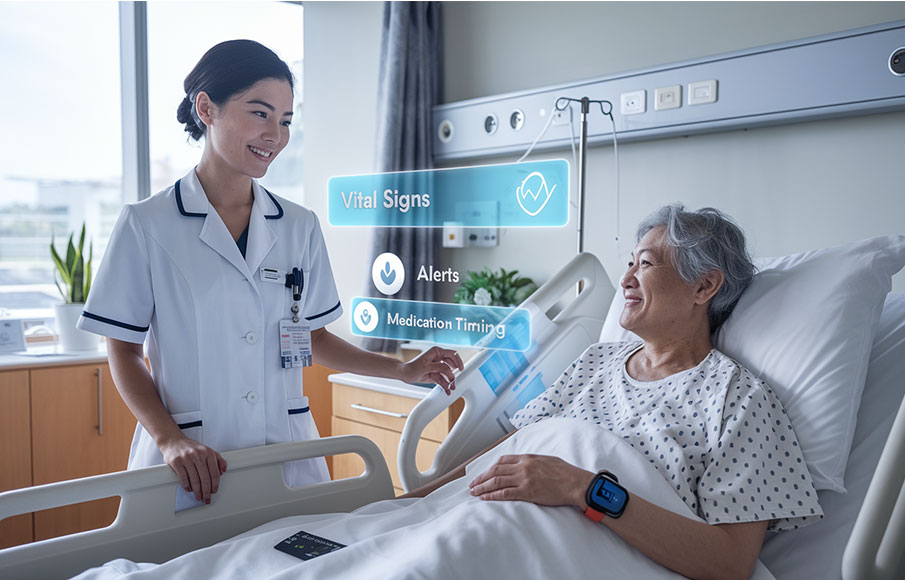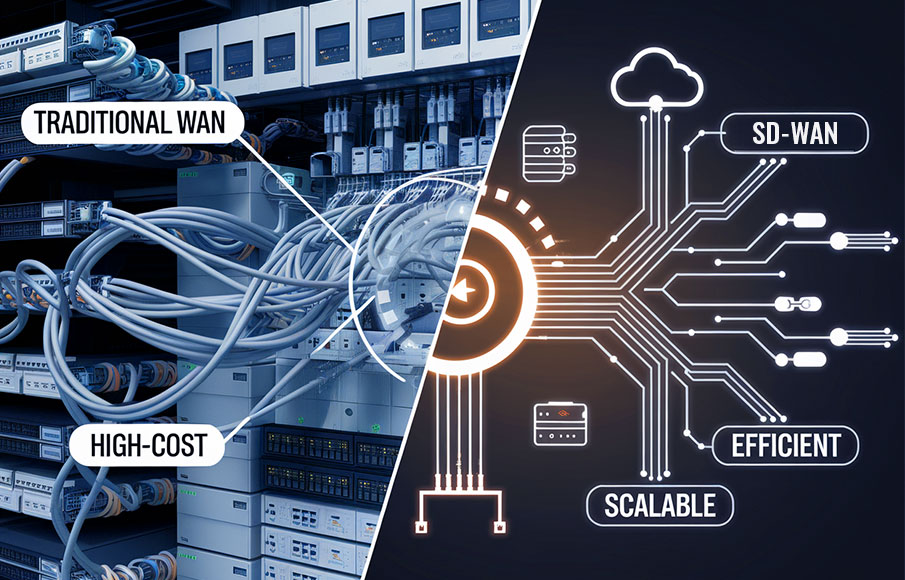CTO Wish List
- 12 August 2020

What Your Modern Network Needs To Deliver Business Success
With the promise of unlocking new business growth and increasing productivity, digital transformation has become a mantra for companies and their C-suite looking to build a successful future in the era of Industry 4.0.
Chief Technology Officers (CTOs) have moved from the backline to the forefront of businesses, earning a more strategic role in creating value for the company and helping CEOs sustain profitability. 32 per cent of CEOs rated IT as their second highest priority, right after driving business growth, according to the 2019 Gartner CEO and Senior Business Executive Survey.
2020 has only highlighted the roles of CTOs ever more significantly. A year affected by the COVID-19 pandemic and recessionary headwinds has underscored the fact that Enterprise IT is the mechanism keeping a business operational and effective even under the current extreme and unprecedented conditions, as highlighted by the IBM Institute of Business Value, and that CTOs play a central role.
Indeed CTOs have the opportunity to move from a technology leader to a business strategist, according to IDC’s CIO Recovery Guide for post-COVID-19. Working with their business leaders, their choice of technology will help their organizations survive the global recession and prepare for renewed growth post-pandemic.
THE ‘NEW NORMAL’ IN NETWORKING
In the world’s ‘new normal’, digital adoption has become ubiquitous among consumers and businesses.
For example in Singapore, schools pivoted to 100 per cent digital classrooms and home-based learning during the circuit breaker period; video-streaming and online webinars replaced physical meetings to become the default platform for events and discussions; manufacturers developed plans for “lights out” factories and supply chains using robotics and AI to automate production. Data from McKinsey showed that the world has covered five years of progress in terms of digital adoption in merely eight weeks since the onset of COVID-19!
This means greater stress on every organization’s networks to ensure their people and equipment stay connected, operational and productive, in order to maintain business continuity.
It also exacerbates the current situation where more and more businesses are confronted with unpredictable bandwidth demands in arguably every industry, as their traditional networks are still struggling to cope with the growing adoption of new technologies like machine learning and the Internet of Things.
(Read more here about how to win in the New Normal)
So in order to plan for their bandwidth needs and bolster the resilience, stability and security of their networks, CTOs must look at three key areas of their modern networking needs:
Software-Defined Networking: The infrastructure of a modern business’ communication system has become much more complex in the past 5 years; traditional networks are unable to support the shifting requirements of various real-time cloud applications. Managing a network in the traditional fashion takes a great deal of time and technological expertise to perform the individual tasks. Worse, making just one mistake in a network where everything is linked individually could potentially bring the whole system down to its knees.
In response, software-defined networking (SDN) has risen rapidly in popularity to overcome the costs and limitations of traditional networks. Being software-based and decoupled from the hardware, these networks allow IT administrators to manage everything via a centralized software application. SDNs eliminate manual configurations and updates, and help businesses cut down operating costs and the risks of human errors when making any changes. Diverse applications such as the cloud are integrated and easier managed with an SDN, and the centralized security control point provides additional protection in the times of BYOD (bring your own device) by distributing security information evenly throughout the network.
Network Security:Online criminal activity has grown in tandem with the digital revolution, looking to exploit the world’s expanding interconnectivity for their own malicious intent. In Singapore, 2019 saw an increase in frequency and sophistication of cyber threats compared to the previous year, according to a recent report published by the Cyber Security Agency of Singapore (CSA).
Among the most common of threats are compromised systems, which are often exploited to launch Distributed Denial-of-Service (DDoS) attacks. Studies have shown that an average of 16 DDoS attacks occur every minute. These attacks generate a flood of illegitimate traffic on the organization’s network, eventually overwhelming it. Networks need to be defendable by nature to help relieve some of the stress on customers’ businesses.
Edge Computing: Singapore’s recently concluded call for proposal for 5G networks promises to enable more complex smart nation use cases, which will require heavy computing and data processing in IoT devices. The rising deployment of IoT and Industrial IoT technologies in various industries means it is crucial for organizations to optimize their network infrastructure for effective computing.
Therefore to enable faster and more cost effective IoT deployment, businesses are increasingly choosing to leverage edge computing across multiple locations to achieve ultra-low latency performance in closer proximities to their IoT devices.Effective deployment of edge computing replaces the need to have computing power within each individual IoT device, which will ultimately increase the cost of IoT deployment, lower the overall device performance, and result in high management and maintenance costs and efforts
UNLOCK YOUR FULL POTENTIAL
SPTel’s business class digital network provides you with an end-to-end SDN with network functions virtualization that enables you to fully realize the potential of your network.
Our Business and Operations Support Systems (or B/OSS) chains together all our services, and through our front end customer portal enables customers to unlock the strength of their SDN. With SPTel, you enjoy these advantages:
- Defendable Network: We’re the only network provider to offer our customers an in-built DDoS Detect solution at no additional cost. This enables us to alert organisations to attacks on their network and provide them the option to proactively mitigate and fend off the attack. We also have an integrated operations center (IOC) monitoring our network performance, which includes best-in-class support by ST Engineering’s Security Operations Center (SOC) monitoring cyber threats.
- On-Demand Services: We believe that our clients should not be locked into long-term contracts that do not fulfill their needs. We offer services on-demand, so you need only pay for additional services (e.g. bandwidth, cyber security) when scaling up as required. For CTOs, this improves your overall Total Cost of Ownership, and avoids wasting costs for extra capacity “just in case”.
- Multi-Access Edge Computing (MEC): We have thousands of pervasive hubs around the island that can facilitate computing at the edge to lower latency and improve performance of your IoT devices, in addition to our ultra-low latency 2-tier network structure. This means faster analytics closer to your business operations and customers. When paired with our IoT-a-a-S platform, we can help you achieve accelerated automation and IoT deployment. Our IoT-a-a-S platform also comes with protocol plug-ins that automatically support standard IoT protocols. The open API architecture also caters for non-standard IoT devices that businesses are not yet ready to retire to communicate on the same platform. It’s entirely centralized, so you can integrate all your IoT solutions on a common platform to facilitate data exchange, analysis, and real-time updates.
Are you interested to find out more about how SPTel can help you maximize your network’s potential? Contact us for more information, or drop us an email if you have any questions.











